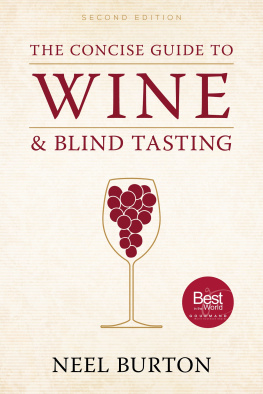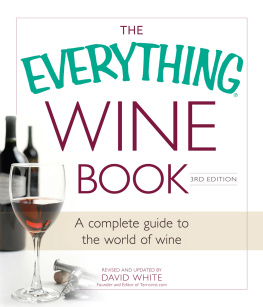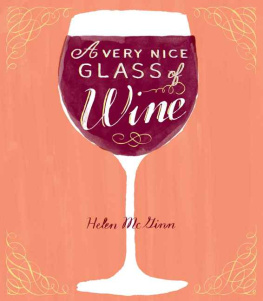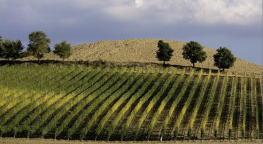O thou invisible spirit of wine, if thou hast no name to be known by, let us call thee devil!
Shakespeare: Othello: Act 2, Sc. iii
THE CONCISE GUIDE TO
WINE
AND
BLIND TASTING
SECOND EDITION
Neel Burton
A
Acheron Press
Flectere si nequeo superos
Acheronta movebo
Acheron Press 2016
Published by Acheron Press
All rights reserved. No part of this book may be reproduced or transmitted, in any form or by any means, without permission.
Typeset by Phoenix Photosetting, Chatham, Kent, United Kingdom
Foreword
Chi pi conosce
pi ama,
pi amando
pi gusta.*
Santa Caterina da Siena
W hen you uncork a bottle of mature fine wine, what you are drinking is the product of a particular culture and tradition, a particular soil and exposure, a particular climate, the weather in that year, and the love and labour and life of people who may since have died.
The wine is still changing, still evolving, so much so that no two bottles can ever be quite the same. By now, the stuff has become incredibly complex, almost ethereal. Without seeking to blaspheme, it has become something like the smell and taste of God.
Do you drink it alone? Never. The better a bottle, the more you want to share it with those who might understand and that is the other incredible thing about wine, that it brings people together, makes them share with one another, laugh with one another, fall in love with one another and the world around them.
For wine is a story that gives birth to stories, and man, a story-telling animal.
*Who knows more, loves more, and, loving more, tastes/enjoys more.
Acknowledgements
I am very grateful to James Flewellen for his important contributions to the first edition, and wish him luck with his new venture, Speckle Technologies. I am also deeply indebted to Hanneke Wilson, the Oxford University blind tasting coach, for all her help throughout the years.
Preface
J ames Flewellen and I wrote the first edition of this book for varsity blind tasting, to pass down the theory of blind tasting to successive generations of students. In the event, the book found a much broader audience, and while the feedback was generally positive, it also pointed to potential improvements.
In brief, the text has been reorganized and the blind tasting guide greatly expanded, with, among others, a new section on blind tasting for exams and competitions. There is also more material on viticulture, winemaking, producers, and vintages, and I have taken the opportunity, where necessary, to refresh facts and figures. The text itself, while somewhat longer, is more concise, with clearer headings and shorter paragraphs.
Differences of opinion are inevitable in a work such as this, and a few errors and omissions may also have crept in. Do let me know if you spot any, and I will do my best to correct them.
Neel Burton
Email:
Twitter: @blindtasters
PART I
Chapter 1
The Beginnings of Wine
E arly foragers and farmers made wine from wild grapes or other fruits. According to archaeological evidence, by 6000 bc grape wine was being made in the Caucasus, and by 3200 bc domesticated grapes had become abundant throughout the Near East. In Mesopotamia, wine was imported from the cooler northern regions, and so came to be known as liquor of the mountains. In Egypt as in Mesopotamia, wine was for nobles and priests, and mostly reserved for religious or medicinal purposes. The Egyptians fermented grape juice in amphorae covered with cloth or leather lids and sealed with Nilotic mud. By biblical times, wine had acquired some less exalted uses. According to the Old Testament, Noah planted a vineyard, and drank of the wine, and was drunken; and he was uncovered within his tent (Genesis 9:21). Skip to the New Testament and here is Jesus moonlighting as a wine consultant: And no man putteth new wine into old wineskins: else the wine bursts the skins, and the wine is lost as well as the skins: but new wine must be put into new skins (Mark 2:22).
Many of the grape varieties found in Greece are identical or similar to those that thrived there in ancient times. Wine played a central role in Ancient Greek culture, and the vine was widely cultivated. The Minoans, who flourished on Crete from c. 2700 bc to c. 1450 bc , exported and imported different wines, which they poured out for recreational as well as religious and ritual purposes. Wine played a similarly important role for the later Mycenans, who flourished on mainland Greece from c. 1600 bc to c. 1100 bc . In fact, wine was so important to the Greeks as to be incarnated in a major deity, Dionysus or Bacchus, who was celebrated and worshipped in a number of annual festivals. One such festival was the three-day Anthesteria, which, held in February each year, celebrated the opening of the wine jars to test the new wine. Active in the 8th century bc , Homer often sang of wine, famously alluding to the Aegean as the wine dark sea. In the Odyssey , he says that, wine can of their wits the wise beguile/ Make the sage frolic, and the serious smile. In the Works and Days , Hesiod, who lived in the 7th or 8th century bc , speaks of pruning vines and drying grapes. The Greeks plainly understood that no two wines are the same, and held the wines of Thassos, Lesbos, Chios, and Mende in especially high regard. Theophrastus, a contemporary and close friend of Aristotle, even demonstrated some very clear notions of terroir.
In Ancient Greece, vines were supported on forked props or trained up trees. The wine was neither racked nor fined, and it was not uncommon for the drinker to pass it through a sieve or strainer. Aromatic herbs, spices, honey, or seawater were often added to improve and preserve the wine, which could also be concentrated by boiling. Finished wine was stored in amphorae lined with resin or pitch, which imparted some additional flavour. Generally speaking, wine was sweeter than it is today, reflecting contemporary tastes, the use of natural yeasts in fermentation, and the lack of temperature control during fermentation (Chapter 3). It did, however, come in a variety of styles, some of which were markedly dry and austere. To drink undiluted wine was considered a bad and barbarian practice, almost as bad as drinking beer like those Babylonian or Egyptian peasants. Instead, wine was diluted with two or three parts of water to produce a beverage with an alcoholic strength of around three-to-five per cent. According to the comedian Hermippus, who flourished in the golden age of Athens, the finest vintage wines smelt of violets, roses, and hyacinths.
Together with the sea-faring Phoenicians, the Ancient Greeks disseminated the vine throughout the Mediterranean, and even named southern Italy Oenotria or Land of Staked Vines. If wine was important to the Greeks, it became even more so to the Romans, who looked upon it as a daily staple and democratized its drinking. The Romans established a great number of Europes major wine producing regions, including Burgundy, Bordeaux, the Loire, and the Mosel, both to supply their soldiers and colonists and to trade with native tribes and convert them to their cause. Following Virgils precept that Bacchus amat colles (Bacchus loves hillsides), they favoured hillsides, typically near a river and an urban centre. The trade of Hispanic wines soon surpassed that of Italian wines, with Hispanic amphorae unearthed as far north as Britain and the Limes Germanicus (German frontier). In his Geographica of 7 bc , Strabo claimed that the vineyards of Hispania Beatica, which roughly corresponds to modern Andalucia, were famous for their great beauty. The area of Pompeii also produced a great deal of wine, much of it destined for Rome; and the eruption of Mount Vesuvius in 79 led to a dramatic penury. The people of Rome panicked, uprooting food crops to plant vineyards. The result was a wine glut and food shortage, which in 92 compelled the emperor Domitian to issue an edict that banned the planting of vineyards in Italy and ordered the uprooting of half of the vineyards in the Roman provinces.















